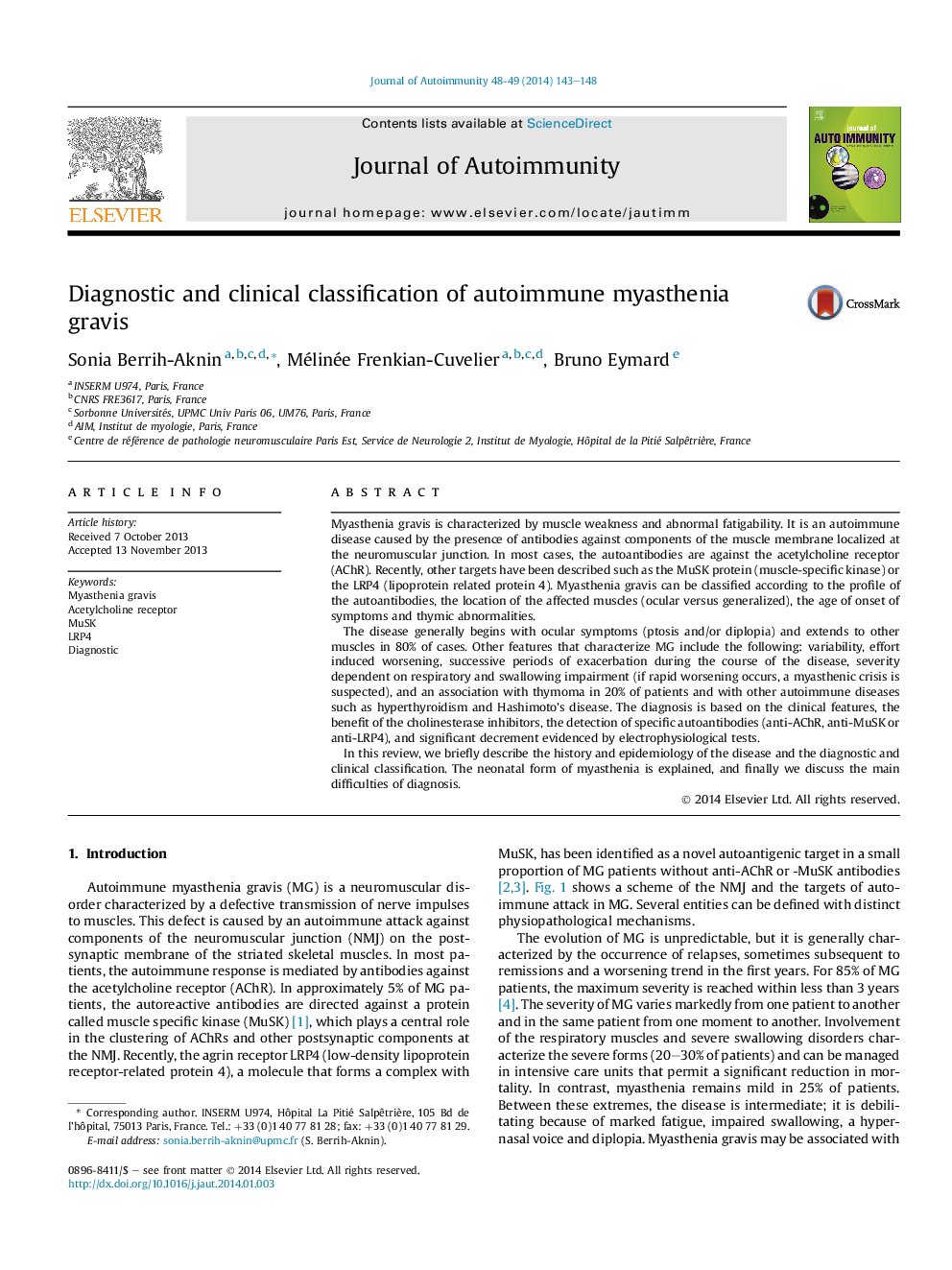| Article ID | Journal | Published Year | Pages | File Type |
|---|---|---|---|---|
| 3367853 | Journal of Autoimmunity | 2014 | 6 Pages |
•Antibodies to several targets (AChR, MuSK and LRP4) are very helpful for the diagnosis.•In case of seronegative patients, the diagnosis is based on clinical and electrophysiological symptoms.•A myasthenic crisis could be life-threatening and must distinguished from a cholinergic crisis.•Babies from MG patients can develop a fetal or neonatal MG disease.
Myasthenia gravis is characterized by muscle weakness and abnormal fatigability. It is an autoimmune disease caused by the presence of antibodies against components of the muscle membrane localized at the neuromuscular junction. In most cases, the autoantibodies are against the acetylcholine receptor (AChR). Recently, other targets have been described such as the MuSK protein (muscle-specific kinase) or the LRP4 (lipoprotein related protein 4). Myasthenia gravis can be classified according to the profile of the autoantibodies, the location of the affected muscles (ocular versus generalized), the age of onset of symptoms and thymic abnormalities.The disease generally begins with ocular symptoms (ptosis and/or diplopia) and extends to other muscles in 80% of cases. Other features that characterize MG include the following: variability, effort induced worsening, successive periods of exacerbation during the course of the disease, severity dependent on respiratory and swallowing impairment (if rapid worsening occurs, a myasthenic crisis is suspected), and an association with thymoma in 20% of patients and with other autoimmune diseases such as hyperthyroidism and Hashimoto's disease. The diagnosis is based on the clinical features, the benefit of the cholinesterase inhibitors, the detection of specific autoantibodies (anti-AChR, anti-MuSK or anti-LRP4), and significant decrement evidenced by electrophysiological tests.In this review, we briefly describe the history and epidemiology of the disease and the diagnostic and clinical classification. The neonatal form of myasthenia is explained, and finally we discuss the main difficulties of diagnosis.
